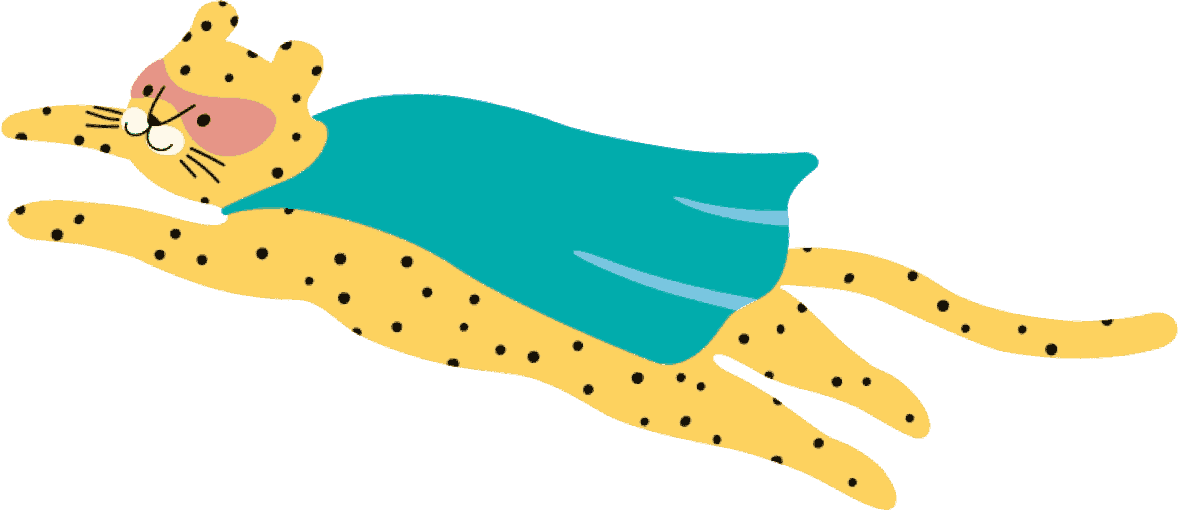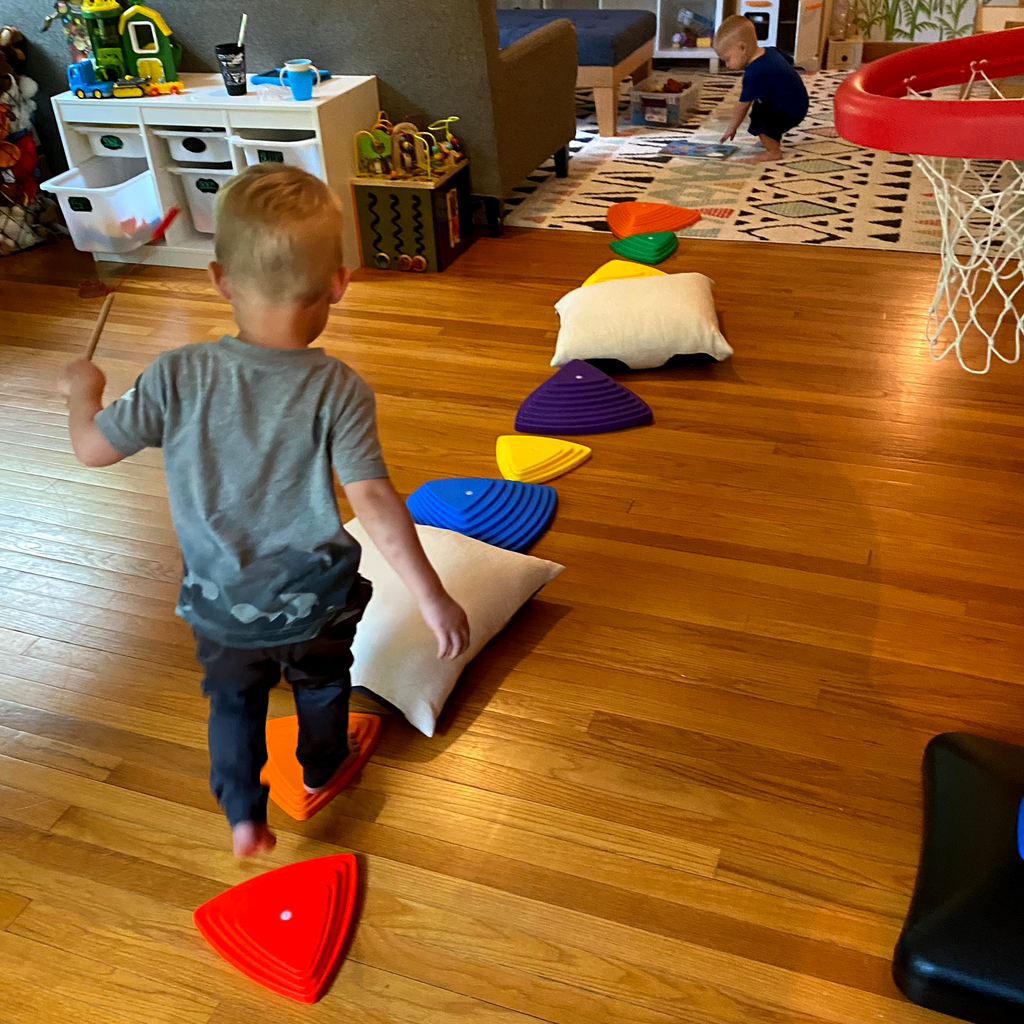Materials:
- A puzzle
- Items for your obstacle course - anything that can safely be stepped or crawled on! Some favorites: pillows, stepping stones, rolled yoga mat, books, towels, boxes, bins, step stool, and couch cushions, tunnel, or make a tunnel with chairs and blanket
Instructions:
- Designate a start and end to the obstacle course. Place the empty puzzle frame (if a wooden puzzle) or a portion of a jigsaw puzzle at one end of the room and additional puzzle pieces at the other. Going down a hallway or across a room is the best.
- In between your endpoints, fill the area with fun items for your obstacle course. Adjust the difficulty of the obstacles based on your child's age and agility. Have your little one help build the course, too. Some examples:
- Walk over things like broom sticks, blocks, or jump rope—this builds balance skills.
- Crawl under a blanket tunnel—this builds core strength.
- Climb over a coffee table—this builds core, leg, and arm strength.
- Use a rolled yoga mat as a balance beam—this builds balance skills.
- Make stepping stones out of pillows—this builds balance, coordination, and spatial awareness skills.
- Start at the end of the obstacle course with the puzzle pieces and instruct your child to carry the puzzle pieces through the course to put it back where it belongs.
- Repeat until all the pieces are in the puzzle! Puzzles work on problem solving, language, and fine motor skills.
Skill areas addressed:
- Gross motor skills
- Coordination
- Motor control
- Balance
- Problem-solving
- Spatial awareness
- Strength
Extensions and adjustments:
- For kids ages 2-3 years old, try larger and more stable objects that are close together, as kids are still developing their balance and spatial awareness.
- For kids ages 3-4 and older, or those who are looking for more of a challenge, try spreading the objects apart and using smaller, and less stable objects.
Author: Kassi Hemming

